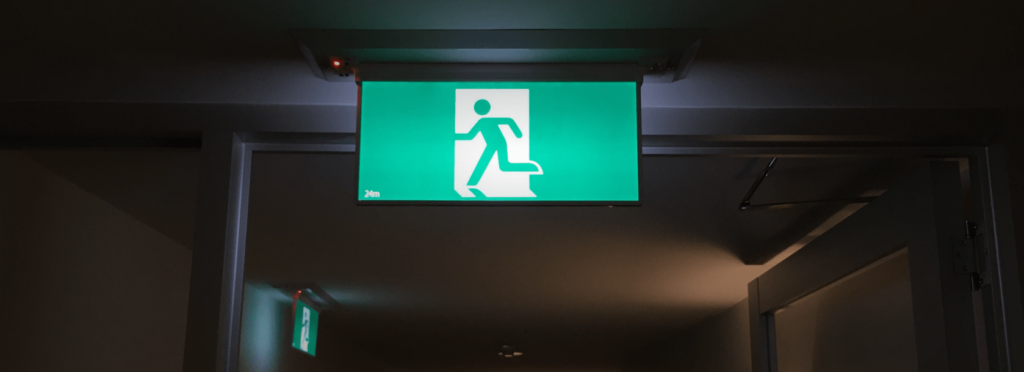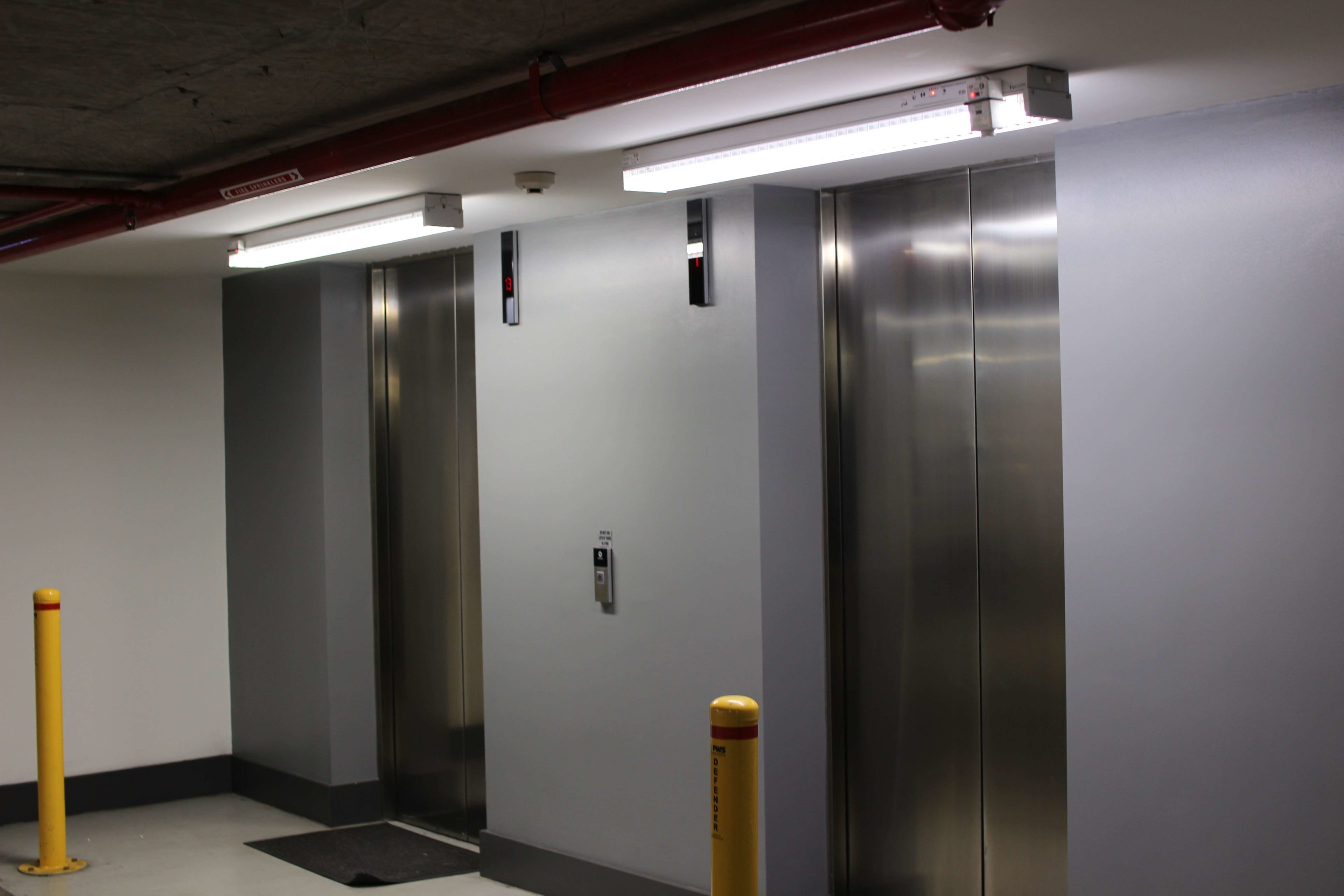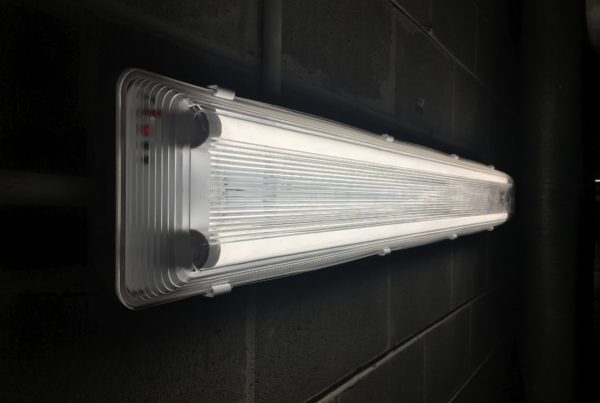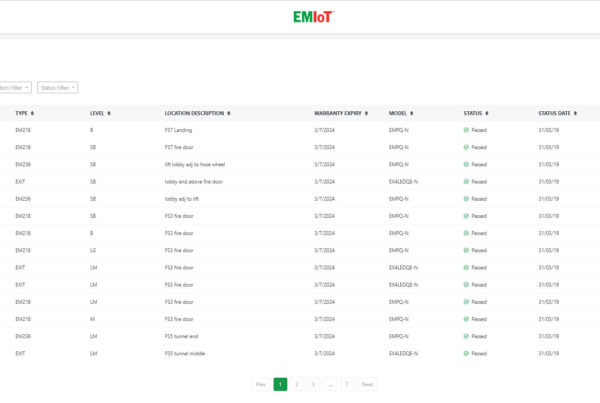What to consider when replacing exit and emergency lighting in NSW
All emergency & exit lights in NSW need to be in complete working order to comply to Australian Standard AS2293. This means that any lights that fail to operate for the minimum 90 minute discharge test or produce the required minimum 0.2 lux output for their positioning (classification), must be replaced with an equivalent product that meets the requirements specified in AS2293. Failure to do so can result in penalties, insurance rejections and more significantly, injury to residents or occupants. So it’s important to make sure the fitting you’re replacing is an actual equivalent and able to perform in line with AS2293.
How do you make sure you are using an equivalent emergency or exit lighting product?
Emergency light fittings are all tested, ranked on their output as well as performance and assigned specific classifications ranging from 5 different classes (A-E). Fittings that comprise of a single light source are classified as two axis, C0 and C90. The WBS Spotfire SP3LED, for example, has the classification of C0: D32 and C90:D32. While Emergency fittings that have two light sources such as the WBS 2x18w 4 foot emergency batten, EM36LED, are typically assigned classifications as three axis, these being C0, C90 as well as C180. This is because the distribution of light is asymmetrical. AS2293.1 includes tables (Table 5.1 to Table 5.5) which are used to obtain the maximum spacing between emergency light fittings for a range of mounting heights.
The quantity and arrangement of exit and emergency fittings required in a building is ultimately determined by the fitting’s Emergency classification in conjunction with the maximum spacing permitted between different classes of emergency fittings, demonstrated in AS2293.1 (Table 5.1 to Table 5.5).
See this blog post for more information.
In a very common occurrence, other brands products may not meet the required classification. Replacement of an existing Exit and Emergency fitting with that of another brand without first ensuring that the classification of the new installation is equivalent to or exceeds the pre-existing fitting puts the building at risk of being non-compliant with the requirements set in Sections E4.2 and E4.5 of the Building Code of Australia (BCA).
In a scenario where an Exit sign which has an Emergency classification (eg. EX4LEDQ Quickfit Exit [D16]) is replaced by a fitting which does not have an equivalent classification, such as an older-style blade exit without sufficient lux rating [D5], then an emergency light fitting such as the Sunrise [D32) MUST be installed within 2m of the exit sign (AS2293-1 clause 5.4.1).
Alternatively, the easier solution to this is to make use of a fitting which meets or even exceeds the classification of what is currently already installed, such as the WBS Blade Exit EX4LEDQE-F/EX4LEDE-F [D32], both of which have been engineered to have an output which exceeds the general standard of [D16]. The individual responsible for making the replacement should ensure that this does not interfere with the lighting design plan for premises.

Ensuring that your replacement fitting is an actual equivalent to what is pre-existing when maintaining Emergency and Exit lights is the most important factor to consider when replacing Exit and Emergency Lighting. Failing to do so results in the fitting failing to meet the standards specified in AS2293, resulting in a breach by the building owner of their legal obligation to provide a safe environment for their occupants. By using a WBS product you can make certain that you are meeting the level of lighting and classification required.
Any persons that makes a decision in regards to substituting or replacing an emergency fitting for another should assume the role of a professional, as this decision brings the risk of liability for anyone that should suffer loss or injury as a consequence of the replacement. This includes the building manager or contractor who makes the swap, as well as anyone who influences the managers decision.
If you find yourself unsure if you are using the correct replacement for your current existing Emergency or Exit fitting, your best bet is to contact someone who is. It ‘s always recommended you seek out the professional advice of an accredited fire systems certifier.
For more information on the WBS range visit your local Electrical Wholesaler





